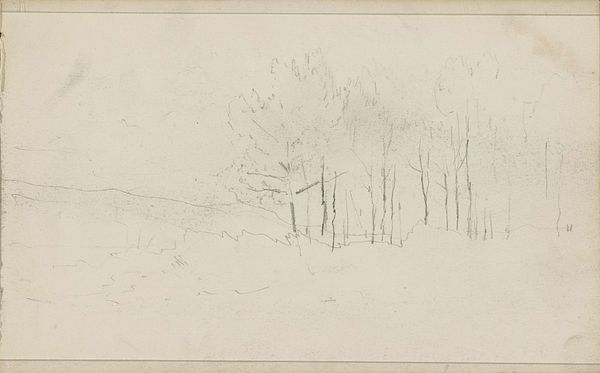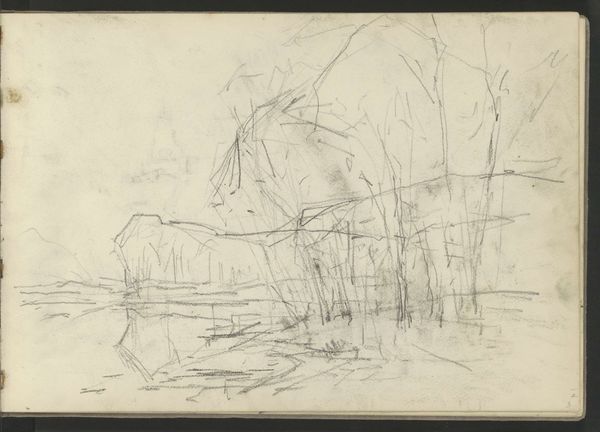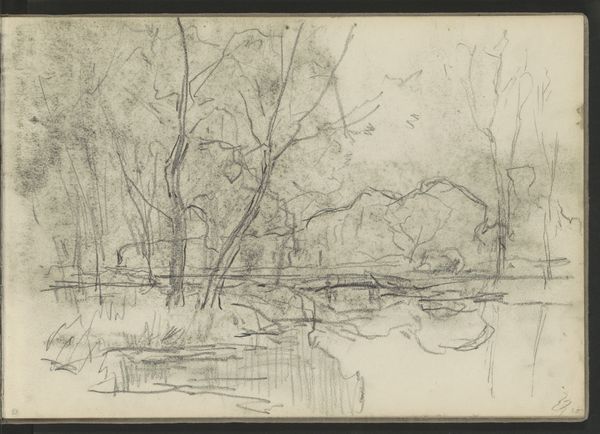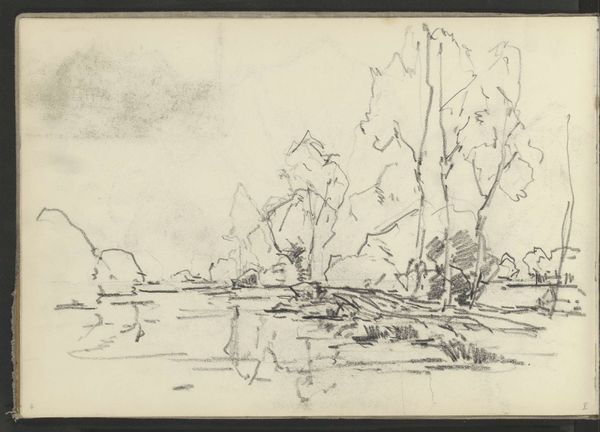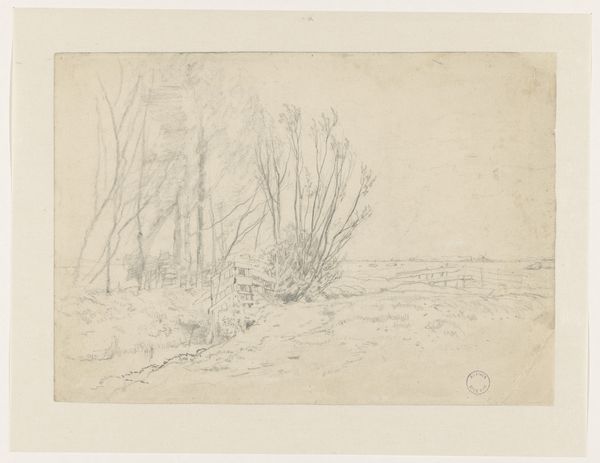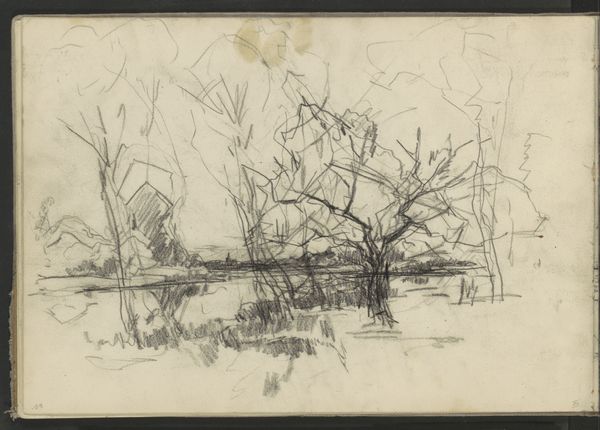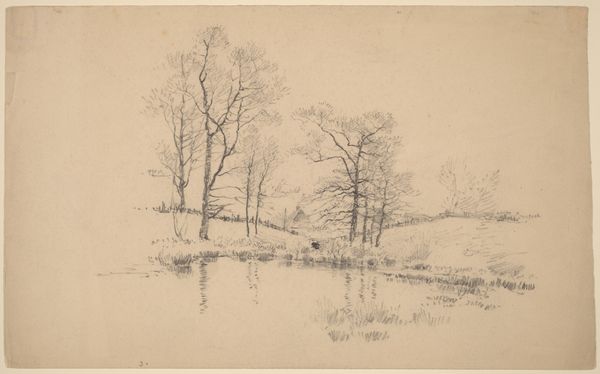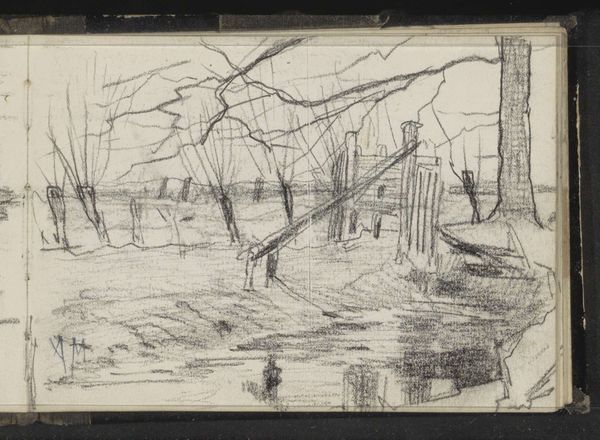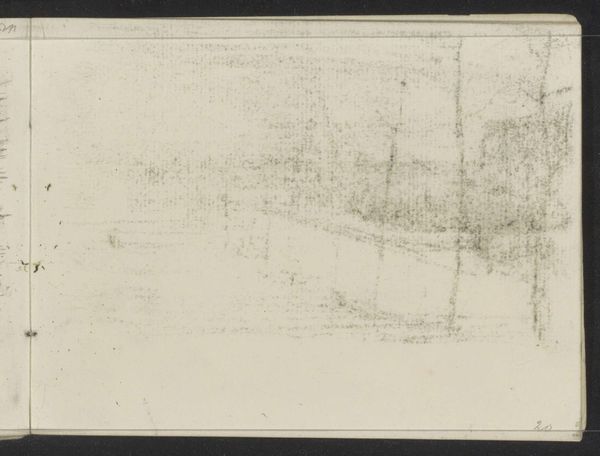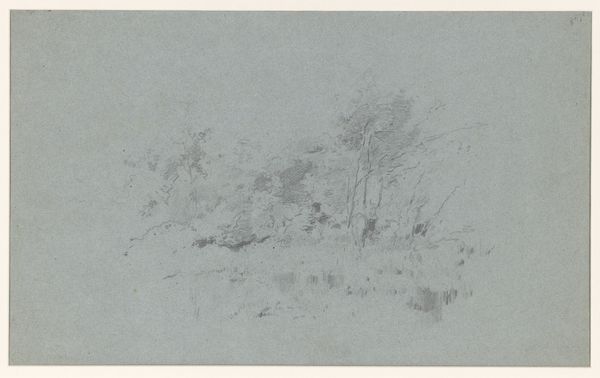
drawing, pencil
#
drawing
#
impressionism
#
pencil sketch
#
landscape
#
pencil
#
realism
Dimensions: height 158 mm, width 247 mm
Copyright: Rijks Museum: Open Domain
Curator: Let's turn our attention to this compelling drawing titled "Knotwilgen langs een vaart," or "Pollard Willows Along a Canal," created by Willem Cornelis Rip between 1876 and 1877. It's rendered in pencil, showcasing a Dutch waterscape. What strikes you first about it? Editor: A kind of ghostly stillness, actually. The light is diffused, the lines are so delicate. It feels like a memory half-formed. Is that just me? Curator: Not at all. Rip's impressionistic style certainly contributes to that feeling. He's not aiming for photorealistic detail, but capturing an atmosphere. The knotwilgen themselves are ancient symbols of rural life in the Netherlands, often associated with resourcefulness and resilience, the land’s deep connection with water management and agricultural rhythms. Editor: Those willows... they look stoic, like old men guarding the waterway. Their silhouettes against that hazy sky have real character, especially how Rip used such subtle variations in the pencil strokes to convey so much about their texture. The rapid pencil strokes suggesting reflections create an immediacy of observation as though the moment itself mattered. Curator: Exactly. These pollard willows were carefully cultivated throughout the Dutch landscape to provide practical solutions – like the material used for basket weaving or building fences. Culturally, they represent sustainability and a respect for the land. There’s a quiet dialogue here between human intervention and the natural world, what the landscape symbolizes versus what it becomes through necessary transformation. Editor: I love how a seemingly simple sketch can hold so much history and symbolism! It is the ability of the artist to invite us into a certain relationship with this location as though our own stories have occurred along its river bank. Rip is able to create a place of both stillness and observation that opens a whole space of reverie within the drawing itself. Curator: It really is a beautiful piece and, for me, unlocks a window into 19th-century Dutch sensibilities, showing us not just what was seen but also what was valued and how a practical scene becomes both ordinary and monumental through attentive observation. Editor: And for me it proves how much power there is in understatement, and that there's an echo chamber where quiet landscapes resonate loudly with human experience.
Comments
No comments
Be the first to comment and join the conversation on the ultimate creative platform.

